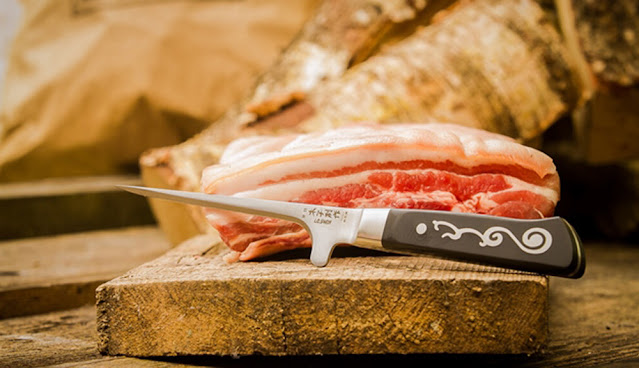Mastering the Art of Filleting: The Essential Guide to Choosing the Perfect Filleting Knife
- Get link
- X
- Other Apps
When it comes to preparing fresh fish, having the right tools can make all the difference. Among these, a filleting knife is indispensable. Whether you're a professional chef, an avid angler, or a home cook who appreciates the nuances of fine cuisine, understanding the importance of a high-quality filleting knife is key. In this guide, we'll delve into what makes a filleting knife unique, how to choose the best one for your needs, and tips for maintaining it to ensure perfect cuts every time.
Why a Filleting Knife is a Must-Have
Precision and Flexibility
A filleting knife is specifically designed to handle the delicate task of filleting fish. Its thin, flexible blade allows for precise cuts, easily maneuvering around bones and under the skin to produce clean, boneless fillets. This precision reduces waste and enhances the presentation and taste of your dish.
Versatility in the Kitchen
While primarily used for fish, a filleting knife's versatility extends to other culinary tasks. Its flexible blade is excellent for deboning poultry, trimming fat from meat, and even slicing fruits and vegetables with precision. This makes it a valuable addition to any kitchen arsenal.
Choosing the Perfect Filleting Knife
Blade Material
The blade material significantly influences the knife's performance and durability. Stainless steel is a popular choice due to its resistance to rust and ease of maintenance. High-carbon stainless steel, on the other hand, offers a sharper edge and longer-lasting sharpness but requires more care to prevent corrosion.
Blade Length
Filleting knives come in various lengths, typically ranging from 6 to 12 inches. The ideal length depends on the size of the fish you usually work with. For smaller fish, a 6 to 7-inch blade provides better control, while an 8 to 9-inch blade is suitable for larger fish. For really large catches, a 10 to 12-inch blade ensures you can fillet efficiently without multiple cuts.
Handle Comfort and Grip
The handle should offer a comfortable and secure grip, especially since filleting often involves working with wet, slippery fish. Ergonomic designs with non-slip materials like rubber or textured composites provide the best control and safety.
Flexibility and Thickness
The flexibility of the blade is crucial for following the contours of the fish bones closely. Thinner blades offer greater flexibility, making them perfect for delicate filleting tasks. However, for larger or tougher fish, a slightly thicker blade might be more effective.
Caring for Your Filleting Knife
Regular Sharpening
Maintaining a razor-sharp edge is vital for the knife's performance. Use a sharpening stone or a specialized knife sharpener to hone the blade regularly. This ensures precise cuts and reduces the risk of accidents caused by dull knives.
Proper Cleaning
After each use, clean your filleting knife with warm, soapy water and dry it thoroughly to prevent rust and corrosion. Avoid using dishwashers, as the high heat and harsh detergents can damage the blade and handle.
Safe Storage
Store your filleting knife in a knife sheath or a dedicated knife block to protect the blade from damage and prevent accidents. Magnetic knife strips are also a convenient option, keeping the knife accessible while ensuring safety.
Tips for Filleting Like a Pro
Start with a Sharp Knife
A sharp filleting knife makes the task easier and more precise. Always check the sharpness before starting, and sharpen if necessary.
Use Smooth, Controlled Strokes
Let the knife do the work with smooth, controlled strokes. This reduces the risk of tearing the flesh and ensures clean, even cuts.
Follow the Fish's Anatomy
Begin by making an incision behind the gills and work your way down the length of the fish, following the natural bone structure. This technique minimizes waste and produces the best fillets.
Conclusion
A high-quality filleting knife is an essential tool for anyone serious about cooking fish. By understanding the key features to look for and how to care for your knife, you can elevate your culinary skills and enjoy the art of filleting with ease. Whether you're preparing a fresh catch from your latest fishing trip or crafting a gourmet meal at home, the right filleting knife will ensure you achieve perfect results every time.
Master the art of filleting with confidence and precision—make your next culinary adventure a cut above the rest with the perfect filleting knife.
- Get link
- X
- Other Apps



Comments
Post a Comment